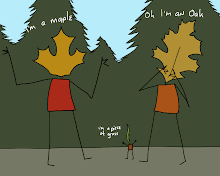In her chapter in Music Scenes, Schilt offers a look into the scene known as Riot Grrrl. Through her research, she identifies its origins as simultaneously emerging from Olympia, Washington and Washington, D.C., but discusses how the scene grew into a translocal one because of fanzines.
As punk began to move more towards hardcore and it became more of a place for men to flaunt their masculinity, women felt more and more pushed out of the scene. Women began creating fanzines where they expressed their opinions about the punk scene and the role that women played in it. It was the distribution of these fanzines that brought the development of Riot Grrrl about. Riot Grrrl is very into the DIY ideology and this was made evident by the amount of fanzines that were out there, the release of small amounts of records on indie labels, and the fact that there was no manifesto and no right way to do things, but rather the autonomy to do things how you wanted to. Conventions and chapter meetings also spread the Riot Grrrl scenes popularity.
When the scene began expanding and more feminists began becoming involved, lines between politics and music began to blur. Fans wanted Riot Grrrl associated bands to take up their individual ideas and politics and spread them. Bands often times did not want to do this. There were also race issues that began springing up in fanzines and meetings. Riot Grrrl was criticized for being too white and too exclusive.
Fearing "selling out," bands stuck to indie labels, and would try not to talk to the media. The media in return began defining Riot Grrrls, and the scene was reduced to one about fashion, rather than about the feminist message. Things started to fall apart as participants began leaving the scene, and new members were scarce. The scene, or at least its ideas, do live on though through a series of music festivals known as Ladyfest.
Question: Why did the media's negative coverage of Riot Grrrl have such a strong impact on the scene? UK Punk's fashion was covered a lot too by the media, and there were probably some articles written that were not accurate, but that didn't halt the scene after only a couple years. Was it also the differing views of participants of Riot Grrrl that led to the dissolving of the scene?

No comments:
Post a Comment